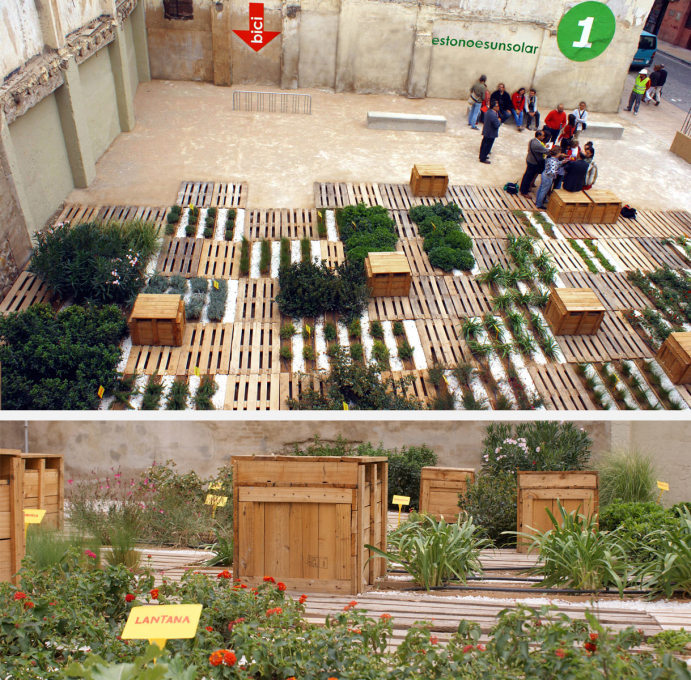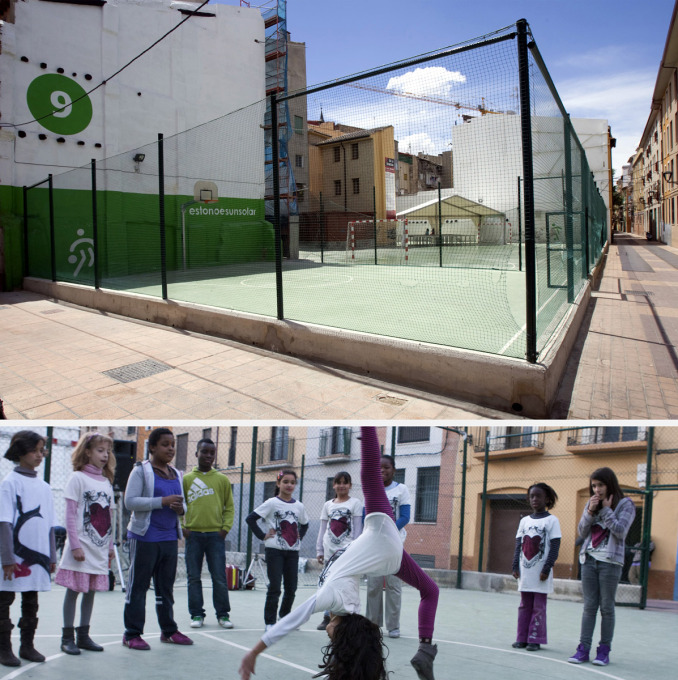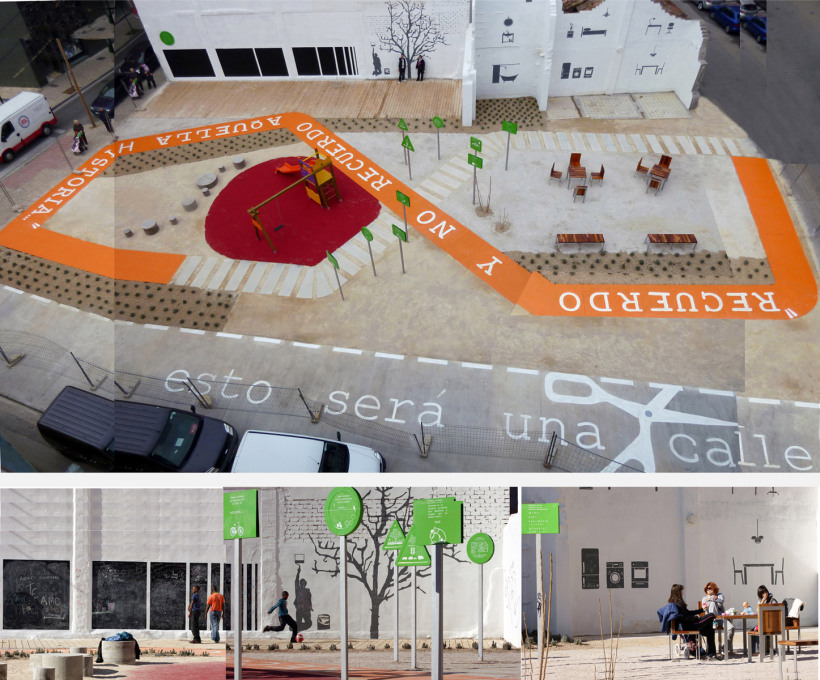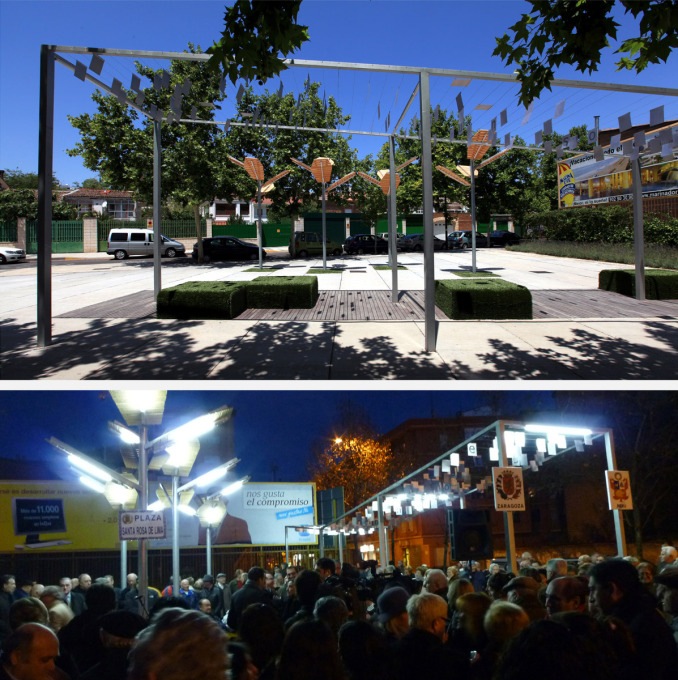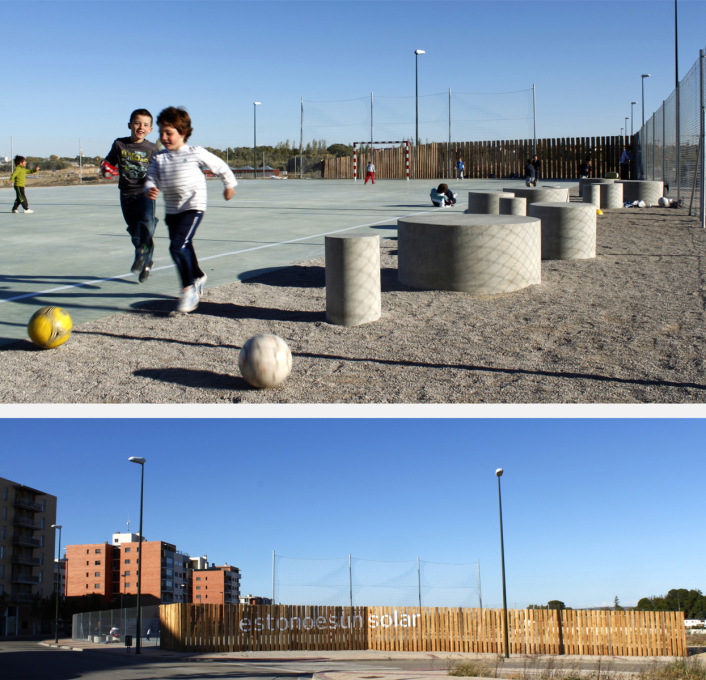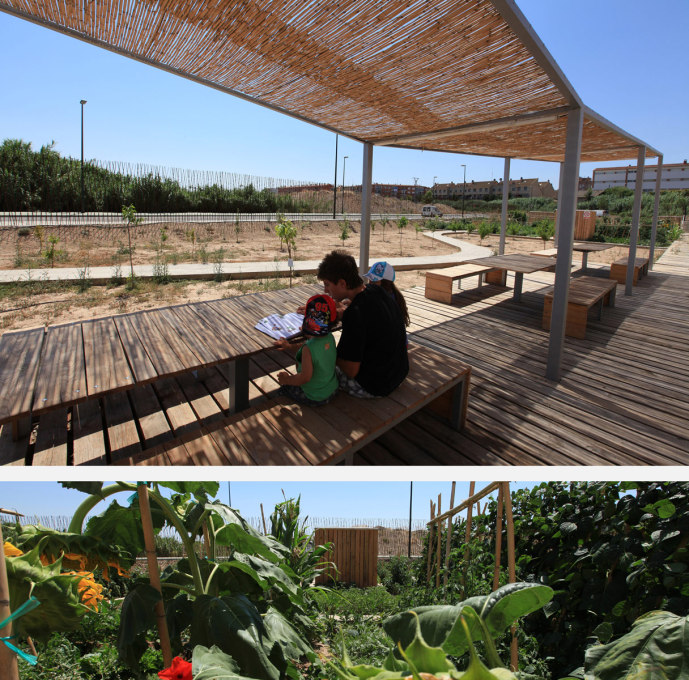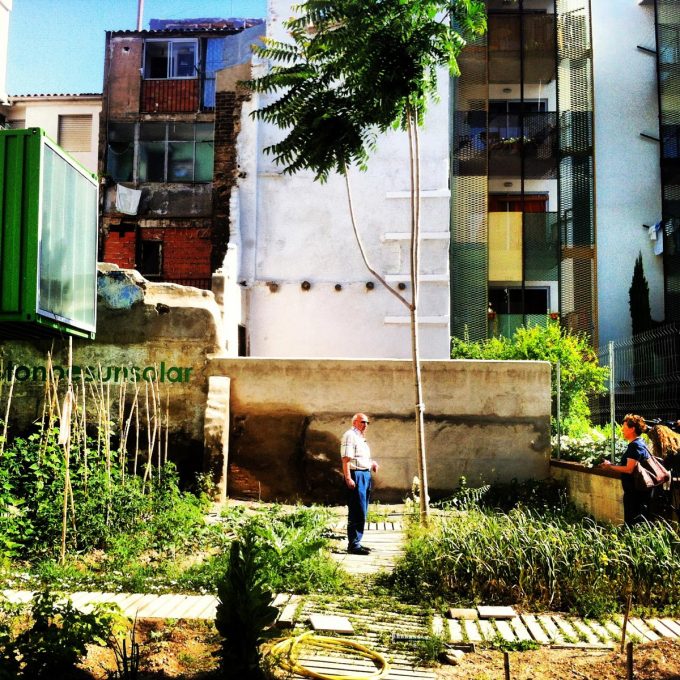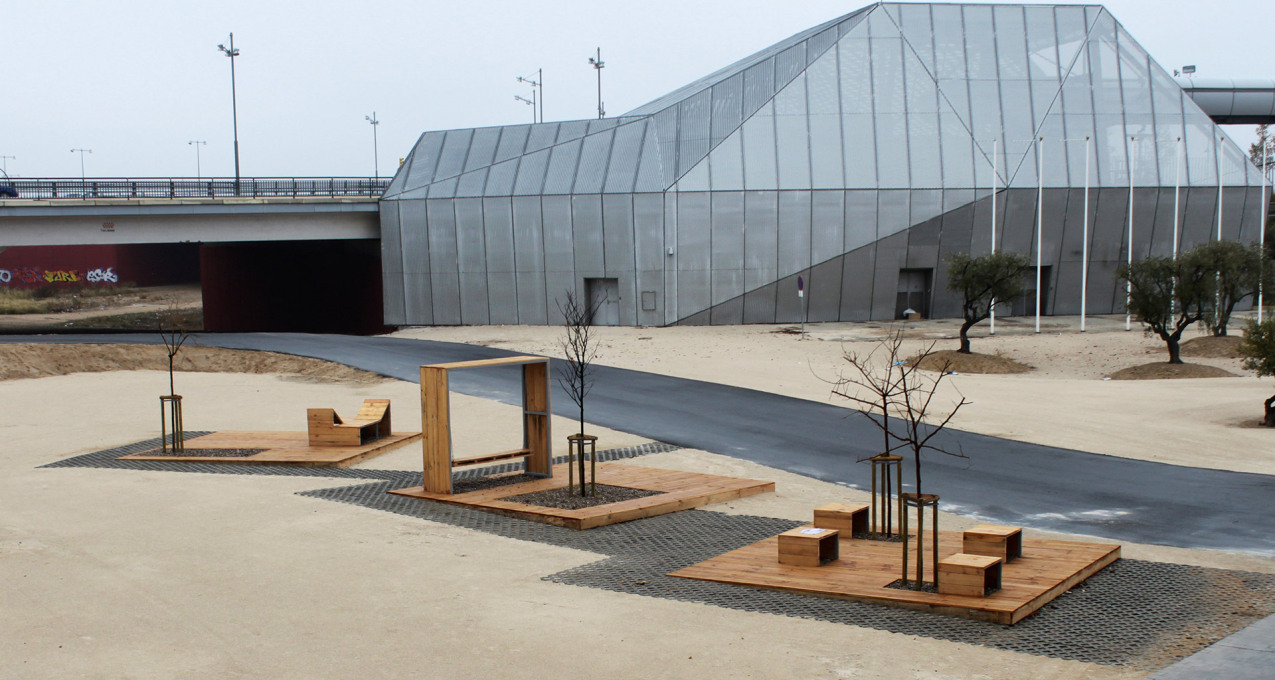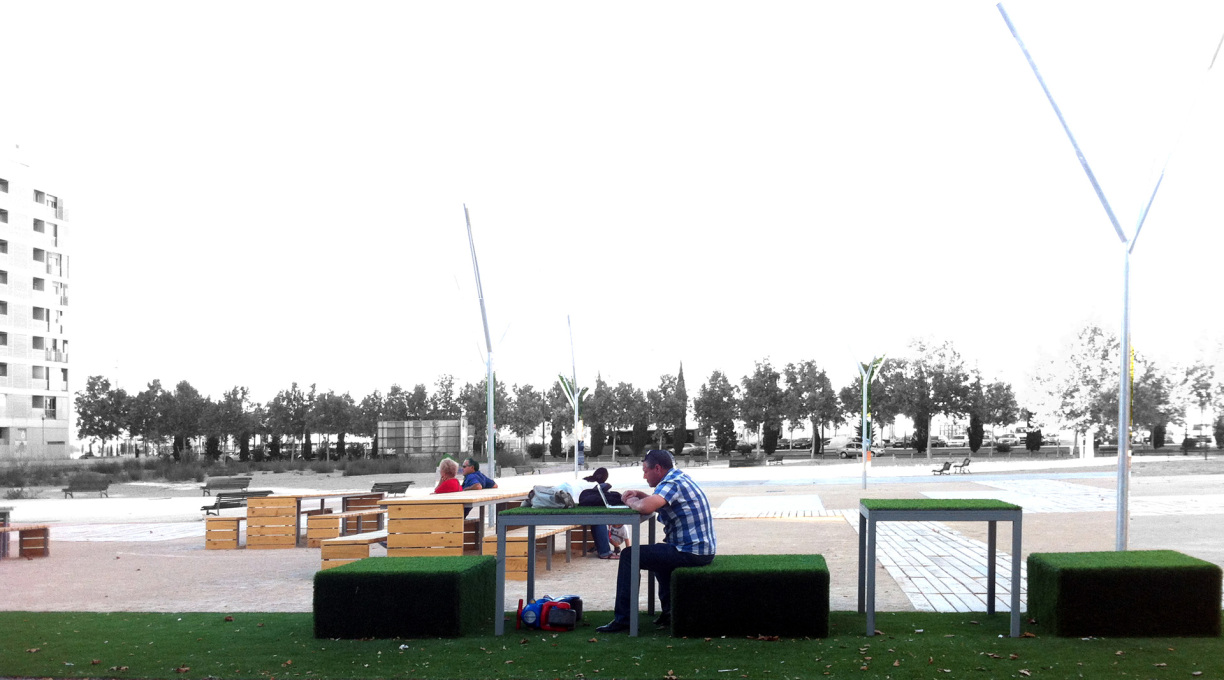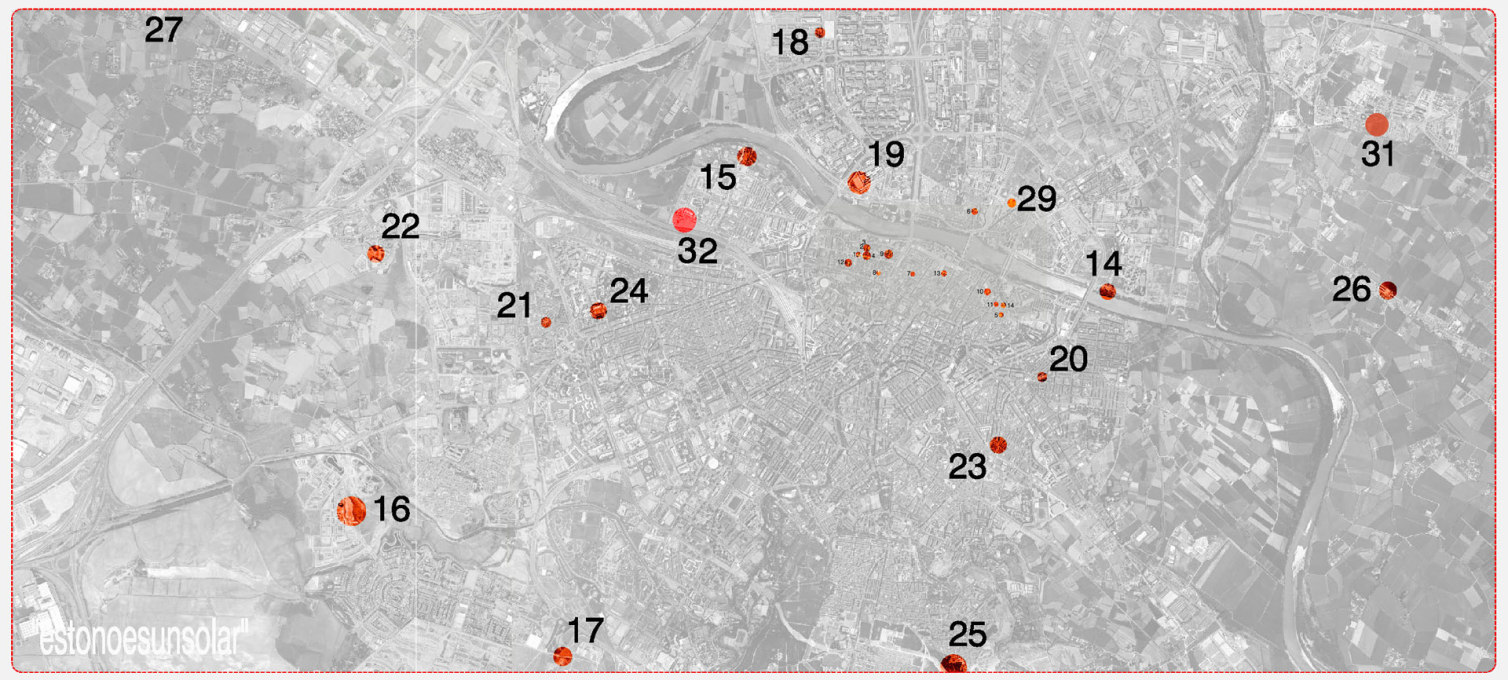Ethel Baraona Pohl takes a closer look at the project, estonoesunsolar (“this is not a site”) which has been transforming empty urban plots in Zaragoza, Spain over the past five years. She wonders if this brilliant project is only possible in the present times of economic crisis or if it can actually transform our way of thinking about land use, urbanism and neighbourhoods in the long term. Once we’re back in times of relative prosperity and growth, will the behavioural changes it has engendered stick?
Scarcity and austerity have become two of the most oft-repeated words in Southern Europe today, and particularly in Spain. The way these two concepts have affected urban policies and political decisions can be found in almost every city across the country. At the same time, the concept of “temporary intervention” has evolved fast over the past decade: projects that were planned to last less than a year – even less than a month – have become permanent and are now understood as forming an important part of the evolution of urban public space, supported by citizen participation and the work of young architects.
In this context, the idea of “antagonistic cooperation” – understood as the suppression of minor differences to achieve a major common interest – have been part of the estonoesunsolar project in Zaragoza since its inception. This project, which has been running for more than five years, has been transforming the public space of the city over a total of 32 sites, and it is an interesting point to analyse how it was conceived, and since been adapted and transformed. Architect Jeremy Till has written that “if architecture is to understand economy it has to understand scarcity” (from: Architecture and the Politics of Scarcity) and that’s exactly what Patrizia di Monte and Ignacio Grávalos did when they started working on this project. With the project’s title meaning literally “this is not a site”, the aim was to give empty, unbuilt-up lots and sites around Zaragoza, a temporary use in order to maximise the utilisation of each city block, thus transforming the old urban fabric of the city into a more dynamic space, and enabling more democratic and political participation. What is interesting and thought-provoking about this project is that it was born not as an architectural or urban project, but as an employment plan. So the programme’s initial goal, supported by Zaragoza City Council with a one million euro budget, was to employ 50 workers clearing and cleaning empty plots in the historic centre of the city over a six month period. For the same economic crisis that caused so many people to be unemployed, had also resulted in many vacant plots remaining empty awaiting development. A simple equation, just one nobody had focussed on before.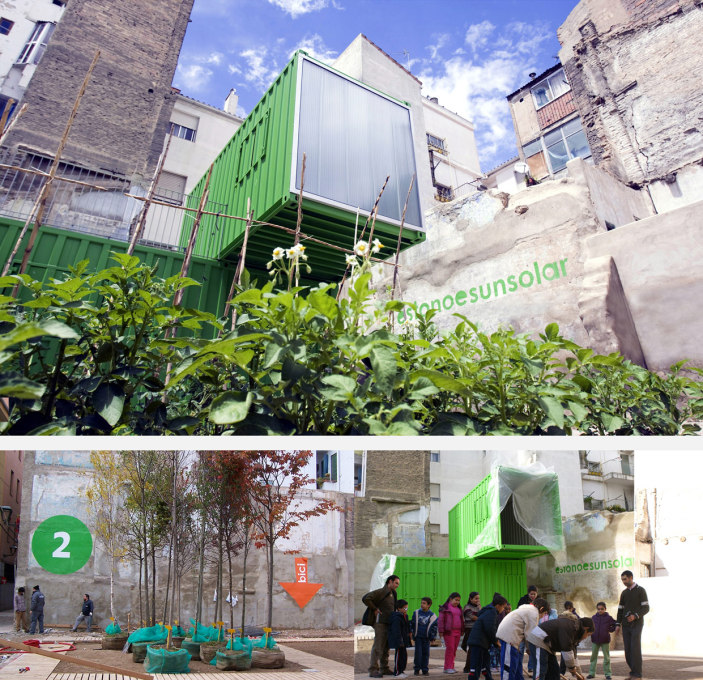
The project developed and with each plot, the aim is to serve the needs of each neighbourhood, through various tailored strategies for urban transformation, that always incorporate a working method designed to enhance citizen participation in the proposing of small-scale projects, ones which engage with the social and cultural realities and needs of each area. The projects have been realised by the interaction of a different combination of participants in each case, including the neighbourhood community, the local administration, schools, and cultural agencies, amongst others. The result of this process is a catalogue of urban interventions that range from sport facilities to urban farming – depending on plot size, specific discussions and agreements with the local community, the materials to hand, and the location of the site.
The complexity of the project lies in the fact that every single plot differs from each other, and are situated over a wide range of urban and socio-economic contexts. The response of estonoesunsolar to such a diversity of situation goes beyond conventional notions of participation and spatial practices, and each project can be understood as an instrument, a tool to envision new possibilities and alternatives, reinforcing the relationship between the city, its institutions and citizens.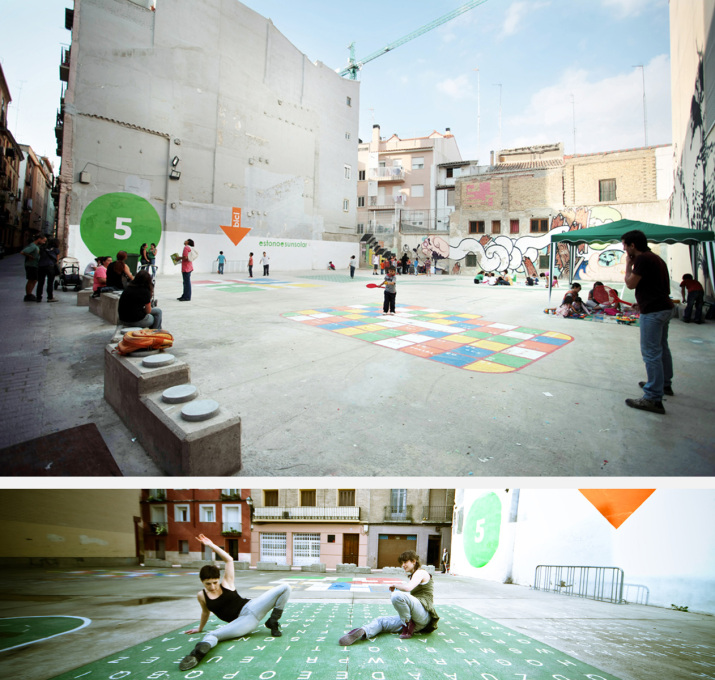
One wonders if it’s possible that a project like this is really able to transform the issue of civic social engagement – of urban inclusion versus exclusion. Perhaps this can’t be answered as yet. If the abundance and dizzying mix of alternative uses that the project has generated can be a catalyst that provokes real structural changes in a city is still a moot point. For the economic crisis is still continuing, and whilst in years of scarcity, it seems that people tend to get more involved in considering their shared “urban commons”, the doubt therefore emerges as to whether we can really talk about “structural changes” in attitudes to public space. Will this much needed shift in attitudes be lasting and transform the behaviour of citizens and institutions even when times of economic recovery and prosperity are back? Will people keep using, engaging and participating in these kinds of projects? For the current value of the project is based on notions of emptiness, silence, void: envisioning each plot as a dynamic tool. But are these just ethereal and ephemeral solutions, are they in themselves strong enough to bring about permanent change? And what will the reaction of the commercial property market be when the value of these plots of land starts rising again?
The biggest challenge of these kinds of projects is to avoid any romantic idea of participation and reinforce the ways that the built environment can be used as a positive tool for real social and political impact in cities. The city here is the field for action, and as theorist Markus Miessen has written in his book The Nightmare of Participation: “The city and the progressive institution exist as social and spatial conflict zones, renegotiating their limits through constant transformation”. The model followed by estonoesunsolar in reimagining urban space presents a different approach to economy: offering new ways of trade and exchange beyond the traditional concept of currency, where time, work and ideas have a value in themselves. This is the kind of value needed to understand the world beyond just neoliberal globalisation and the free market, as a place where everybody has something to offer.
– Ethel Baraona Pohl is a critic, blogger and curator, co-founder of dpr-barcelona and editor of Quaderns.
See uncube Issue No. 20 for more on Urban Commons




